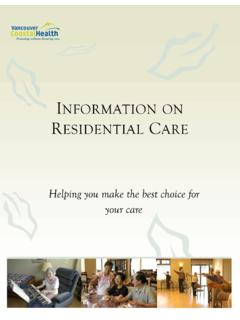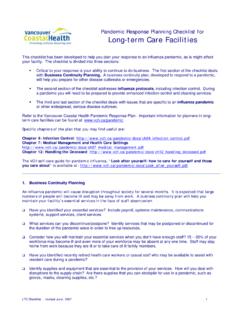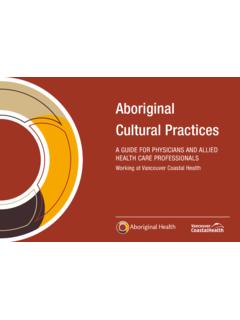Transcription of Design Resource for Child Care Facilities
1 Design Resource for Child care Facilities Provided by: Community care Facilities Licensing U:\Regional HP\CCFL\ Child care \Regional Resources\ Design Resource for Child care -1- Child care Design Resource Table of Contents Section One: Purpose of the Child care Design Resource Page 4. Introduction Jumping into the Sandbox together Definitions Section Two: The Feasibility of Your Child care Plan Page 7. Determination of Community Need Determination of the Type of Child care to Offer Determination of the Location Financial Plan Section Three: Selecting a Location or Site Page 8. Location Health & Well Being Environmental Considerations Section Four: Interior Design Page 10.
2 About Design Design Considerations for Specific Areas within a Child care facility Section Five: Group Child care (Under 36 Months) Page 12. Child care Licensing Regulation Requirements Consideration for Group Child care (Under 36 months). Section Six: Group Child care (30 Months to School Age) Page 14. Child care Licensing Regulation Requirements Considerations for Group Child care (30 months to school age). Section Seven: Group Child care (School Age) Page 16. Child care Licensing Regulation Requirements Considerations for Group Child care (School Age). Section Eight: Adult Space Within A Child care Facility Page 17. Storage Staff room and washrooms Office Meetings Appendix: I Net Area Recommendations for under 36 months programs Page 18.
3 II Net Area Recommendations for 30 months to school age programs Page 19. III Net Area Recommendations for Preschool Programs Page 20. IV Roof Top Outdoor Play Area Page 21. V General Considerations Checklist Page 23. Outdoor space requirements please refer to: The Director of Licensing Standards of Practice Safe Play Space U:\Regional HP\CCFL\ Child care \Regional Resources\ Design Resource for Child care -2- Children are miracles Believing that every Child is a miracle can transform the way we Design for children's care . When we invite a miracle into our lives we prepare ourselves and the environment around us. We may set out flowers or special offerings. We may cleanse ourselves, the space, or our thoughts of everything but the love inside us.
4 We make it our job to create, with reverence and gratitude, a space that is worthy of a miracle! Action follows thought. We can choose to change. We can choose to Design spaces for miracles, not minimums. Quote by Anita Rui Olds U:\Regional HP\CCFL\ Child care \Regional Resources\ Design Resource for Child care -3- SECTION ONE. PURPOSE OF THE Child care Design Resource . This document is intended to provide the reader with an understanding of space and Design requirements that are required by the Child care Licensing Regulation for the provision of quality Child care . The document is a Resource for individuals wishing to create new Child care spaces in existing buildings, build a new Child care facility or renovate existing Child care space.
5 INTRODUCTION. Noted Child care consultant Jim Greenman estimates that children may spend up to 12,000 hours in full day Child care before they reach the age when their parents decide Child care is no longer necessary. It is during this time in their lives when young children go through critical periods of development. Research has clearly demonstrated that well designed spaces for children contribute greatly to their life long mental and physical health. A word about PLAY. Joe L. Frost, of the University of Texas states On no other educational or Child development issue is the body of evidence clearer play is essential to the healthy development of children and to their adaptation to their culture, society and world.
6 Mr. Frost defines the term play value as applied to environments, materials and equipment as those that are selected, designed, or constructed to accommodate the play and games commonly chosen by the age and developmental levels of children who play there. Mr. Frost says that environments for play may differ radically without sacrificing play value. It is therefore critical to view the construction of a children's environment as a play environment and that the environment (indoors and outdoors) must allow for play that is active, creative and social, engaging the body in fine and gross motor development and the mind in negotiation, problem solving, imagination and flexibility.
7 These are the qualities that Child care Licensing will look for when we assess plans for a Child care environment. JUMPING INTO THE SANDBOX TOGETHER. Designing environments for children is a complex task. To succeed, children's environments must foster and promote children's safety while allowing them to engage in multiple activities. To achieve such an environment, designers and builders must understand the nature of Child care , children's developmental needs, the needs of Child care staff and families and have a solid working knowledge of the local bylaws, building codes and relevant provincial legislation. Community care Facilities Licensing recommends the concept of jumping into the sandbox together.
8 That is, before the Design stage begins there is an initial coming together of as many individuals as possible to provide input from their specific area of expertise. It is also helpful for the group to meet at different points during the planning stage to provide comments on specific areas of the plan. These experts might include: An architect A designer An experienced Child care administrator or provider A parent with children attending a Child care program A representative from Community care Facilities Licensing A representative from the City Social Planning Department A representative from local Child care support agencies The Child care operator if known Please note that this is not an exhaustive list and you are encouraged to invite other individuals in the community to join in the initial planning.
9 Jumping into the sandbox together is a proven way to avoid Design problems. U:\Regional HP\CCFL\ Child care \Regional Resources\ Design Resource for Child care -4- DEFINITIONS. For the purposes of this Resource , the following definitions apply: Community care and Assisted Living Act The overarching Act that encompasses the Child care Licensing Regulation Child care Licensing Regulation The regulation describes requirements for establishing Child care Facilities and for the continued operation of licensed Child care Facilities . Community care Facilities Licensing Program Located within each Health Service Delivery Area (HSDA), the Community care Facilities Licensing Program is responsible for the licensing and monitoring of Child and residential licensed Facilities .
10 Facility A building or portion of a building in which licensed care is provided as well as the outdoor area dedicated to the program. Program A program consists of daily indoor and outdoor activities that are planned for children and must meet children's developmental needs as described in Schedule G of the Child care Licensing Regulation. Developmentally Appropriate This term means that the space, activities, equipment and materials are appropriate for the age and developmental level of the children. Developmentally appropriate may also apply to a program of activities for children indicating that children can participate in an activity or task that is appropriate for their developmental level.













